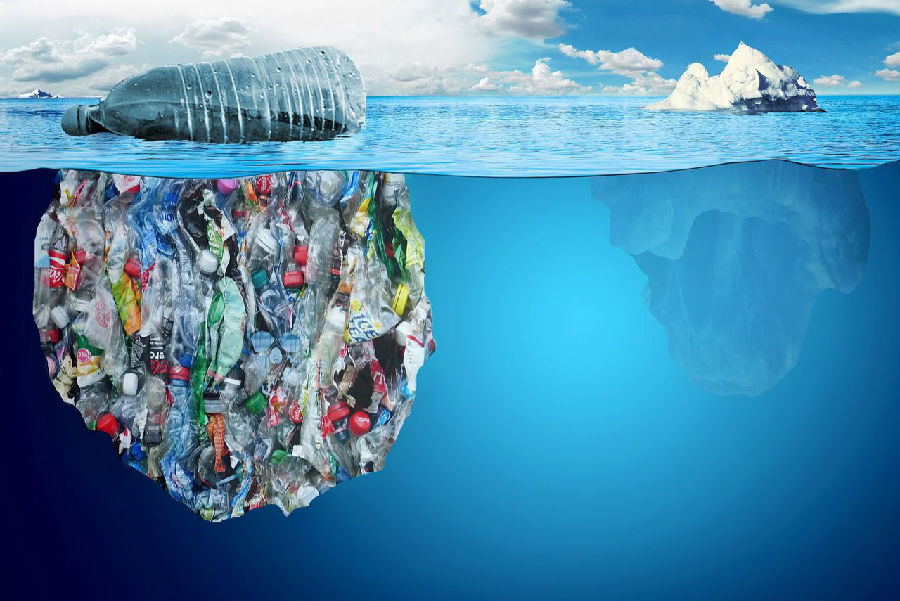He looks like the captain of this garbage boat.
他有点儿这艘垃圾船的船长范儿哎。
Scenes like this are a daily reality for the crew of seeker on their pacific trek.
这样的情形,“科学探索之旅”号太平洋之旅的每一天都在上演。
Some estimates hold that by 2050, there could be as much plastic as there are fish In the ocean.
有估计认为,到2050年,塑料的数量可能会和海洋里的鱼一样多。
Every day we see plastic.
我们每天都能看到塑料垃圾。
I'm already worried.
现在我已经很担心了。
That is why I want to show what is happening.
这也是我为什么想把现状展示给大家的原因。
We got back with this net.
我们拿回了这个网。
So it's not only one net, it's many nets that are tangled together.
这不单单是一张网,而是缠在一起的很多张网。
Also some other very interesting items, like this toothbrush was trapped in the net.
还有一些非常有意思的东西,比如这把被困在了网里的牙刷。
But what is all this junk, exactly? Where does it come from?
但这些垃圾到底是什么?又是从哪里来的?
And is it really concentrated in a giant ‘garbage patch' somewhere out there?
它之前真的是附在某个巨大的“垃圾带”上的吗?
Marcus eriksen is an environmental scientist Who has made it his life's mission to solve the problem of marine plastic.
马库斯·埃里克森是一位环境科学家,他将解决海洋塑料问题视为了自己终身的使命。
It's a global issue, because plastic accumulates in gyres, large circular currents that thread through the world's oceans.
这个问题已经上升为一个全球性问题了,因为塑料在环流,穿过世界海洋的巨大环状洋流,中堆积得越来越多了。
What's leaving land heading out to sea is all the single-use packaging:
让陆地侵蚀海洋的是各种各样的一次性包装:
It's the straws, the bags, the bottles, the cup lids, the stir sticks, all this junk that we use once and throw away.
就是那些吸管啦,塑料袋啦,瓶子啦,杯盖,搅拌棒,所有我们用过一次就扔掉的产品。
A plastic bottle leaving california will get to japan in about three to five years and come back across the northern half of the north pacific.
从加利福尼亚出发的塑料瓶能在三五年后到达日本,然后穿过北太平洋的北半部再回到加利福利亚。
That spinning mass of water is a gyre.
那个旋转的水涡就是一个环流。
Plastic trash will migrate to those zones and get stuck.
塑料垃圾会迁移到那些水域然后卡在里面就出不来了。
We actually take boats out in the middle of nowhere,
我们真的有把船开到离岸特别特别远的地方,
we drag our net behind the boat and we count the plastic particles that are floating.
然后在船尾拖个网网垃圾,然后数那些漂浮在水面上的塑料碎屑的数量。
Working with ocean modelers, we can get these regional maps of how much trash is out there, what it is and where it is.
通过与海洋模型师合作,我们能够获取关于这些地区有多少垃圾,分别都是什么垃圾以及这些垃圾的位置的地图。
But answering even these basic questions about marine debris has proven to be surprisingly challenging.
但事实证明,即便是这些关于海洋垃圾碎片的基本问题回答起来也困难得出人意料。

In fact, everything we know about the proverbial 'great pacific garbage patch' started in 1990, when a container ship spilled 61,000 sneakers into the ocean.
事实上,我们对众所周知的“大太平洋垃圾带”的了解始于1990年,一艘集装箱船将6.1万双运动鞋倒入了太平洋这一事件。
Realizing that a lot of these sneakers would never come to shore, that they would would just be stuck in this vortex,
在意识到那些鞋中有很多不仅永远都不会漂到岸上,还会一直被困在这个漩涡里之后,
Curtis Ebbesmeyer, working with James Ingraham Jr. at noaa, they're the ones that came up with the term 'great pacific garbage patch.'
柯蒂斯·埃比斯迈耶便和美国国家海洋和大气管理局的詹姆斯·因格拉汉姆展开了合作,“太平洋大垃圾带”这个词也是他们最先提出来的。
Captain Charles Moore is often credited with the first observations of the patch, a constellation of microplastic particles that captured the public's imagination.
查尔斯·摩尔船长通常被认为是第一个观测到这个垃圾带的人,这个垃圾带是由一大堆的微型塑料微粒组成的,其规模之大超乎普通人的想象。
Captain Charles Moore had described the area: he said, 'look, I'm in an area roughly twice the size of Texas where I'm doing my transects' and that hit the media by storm.
船长查尔斯·摩尔对其描述到:他说,‘告诉你们,我现在所处的地方大约是德克萨斯州的两倍大,这就是我切割横断面的地方’,这一消息立刻在媒体上引起了轩然大波。
There aren't these islands of trash; they don't exist.
这里并没有什么垃圾岛;垃圾岛并不存在。
It's more like a smog of microplastic particles, billions of them, very toxic over a wide area.
它更像是由微塑料颗粒,不计其数的这种颗粒形成的烟雾,而这种烟雾在很大范围内都是有毒的。
Even when they become brittle and break apart, plastic pieces persist.
就算那些颗粒变脆散架,里面塑料的成分还是会继续存在。
Unable to oxidize or become waterlogged like metals, wood or paper, all types of plastic are designed to defeat natural decay.
塑料不像金属、木材或纸张那样能够氧化或被水浸湿,它们都是专为防止自然腐烂而设计的。
In general, high density polyethylene, number two plastic, is the most common plastic in consumer use,
一般来说,高密度聚乙烯,第二大塑料,是消费者使用最多的塑料,
and it makes your soap bottles, it makes your toothbrushes, it makes many of the consumer goods that float out in the garbage patch.
肥皂瓶,牙刷,许多漂浮在垃圾带上的消费品都是用这种塑料制成的。


